Non-Destructive Evaluation of Impacted CFRP by IR Thermography
Abstract
:1. Introduction
2. Experimental Testing
2.1. Measuring System
2.2. Test Results
3. Non-Destructive Testing
3.1. Experimental Set-Up
3.2. Results
4. Conclusions
Author Contributions
Funding
Conflicts of Interest
References
- Swiderski, W.; Pracht, M. Ultrasonic IR Thermography Detection of Defects in Multi-layered Aramide Composites. In Proceedings of the 19th World Conference on Non-Destructive Testing, Munich, Germany, 13–17 June 2016. [Google Scholar]
- Swiderski, W.; Hlosta, P.; Szudrowicz, M. Characterization of defects in composites used in light ballistic protections by thermal tomography methods. Prob. Mechatroniks 2016, 7, 31–42. (In Polish) [Google Scholar]
- Cole, W.F.; Forte, M.F.; Heslehurst, R.B. Maintainability Issues in ASM Handbook, Volume 21—Composites; ASM International: Novelty, OH, USA, 2001; pp. 914–921. [Google Scholar]
- Maldague, X.P.V. Theory and Practice of Infrared Technology for Nondestructive Testing; John Wiley & Sons, Inc.: New York, NY, USA, 2001. [Google Scholar]
- Dragan, K.; Swiderski, W. Multimode NDE approach for structure health assessment of composite elements in aerospace applications. Acta Phys. Pol. A 2010, 117, 878–883. [Google Scholar] [CrossRef]
- Vavilov, V.P.; Burleigh, D.D. Review of pulsed thermal NDT: Physical principles, theory and data processing. NDT & E Int. 2015, 73, 28–52. [Google Scholar]
- Palumbo, D.; Cavallo, P.; Galietti, U. An investigation of the stepped thermography technique for defects evaluation in GFRP materials. NDT & E Int. 2019, 102, 254–263. [Google Scholar]
- Pura, R. Method for the Impact or Shot Valuation in a Shooting Range and Shooing Range. U.S. Patent US68402B1, 11 January 2005. [Google Scholar]
- Zakharov, V.N.; Romashkin, V.V.; Rublew, N.I. Method for Determination of Coordinates of Target Hits for Small Arms and Device for Its Realization. Russia Patent No. RU2255294C1, 19 March 2004. [Google Scholar]
- Swiderski, W.; Hlosta, P.; Pracht, M. System for Detection and Registration of Impact Zones on the Shooting Missile Impact Target, Including two Thermal Cameras. Poland Patent No. P422731, 4 September 2017. (In Polish). [Google Scholar]
- Meola, C.; Boccardia, S.; Carlomagno, G.M.; Boffaa, N.D.; Riccia, F.; Simeolib, G.; Russoc, P. Impact damaging of composites through online monitoring and non-destructive evaluation with infrared thermography. NDT & E Int. 2017, 85, 34–42. [Google Scholar]
- Swiderski, W.; Szudrowicz, M. Non-standard methods of data processing in thermographic non-destructive testing of light ballistic protections. J. KONES 2012, 19, 431–440. [Google Scholar] [CrossRef]
- Ibarra-Castanedo, C.; González, D.; Maldague, X. Automatic Algorithm for Quantitative Pulsed Phase Thermography Calculations. 2004. Available online: www.ndt.net (accessed on 13 March 2019).
- Szudrowicz, M.; Ruryna, K.; Jamrozik, K. Ballistic screens—Laminates based on aramide fabries. Probl. Techniki Uzbrojenia 2005, 95, 207–216. (In Polish) [Google Scholar]
- Balageas, D.; Maldague, X.; Burleigh, D.; Vavilov, V.P.; Oswald-Tranta, B.; Roche, J.-M.; Pradere, C.; Carlomagno, G.M. Thermal (IR) and Other NDT Techniques for Improved Material Inspection. J Nondestruct. Eval. 2016, 35, 18. [Google Scholar] [CrossRef]
- Umar, M.Z.; Vavilov, V.; Abdullah, H.; Ariffin, A.K. Quantitative study of local heat sources by Ultrasonic Infrared Thermography: An approach for estimating total energy released by low energy impact damage in C/C composite. Compos. Part B 2019, 165, 167–173. [Google Scholar] [CrossRef]
- Ciampa, F.; Mahmoodi, P.; Pinto, F.; Meo, M. Recent Advances in Active Infrared Thermography for Non-Destructive Testing of Aerospace Components. Sensors 2018, 18, 609. [Google Scholar] [CrossRef] [PubMed]
- Deane, S.; Avdelidis, N.; Castanedo, C.I.; Zhang, H.; Nezhad, H.Y.; Williamson, A.A.; Maldague, X.; Tsourdos, A. Autonomous Systems Imaging of Aerospace Structures. In Proceedings of the 10th International Symposium on NDT in Aerospace, Dresden, German, 24–26 October 2018; Available online: https://www.researchgate.net/publication/329558466 (accessed on 13 March 2019).
- Swiderski, W. Non-destructive testing of CFRP by ultrasonic thermography after ballistic testing. Proc. Trans. Means. 2017, 1, 203–206. [Google Scholar]
- STANAG. 2920—Ballistic Test Method for Personal Armour Materials and Combat Clothing; NATO Standardization office: Brussels, Belgium, 2003. [Google Scholar]
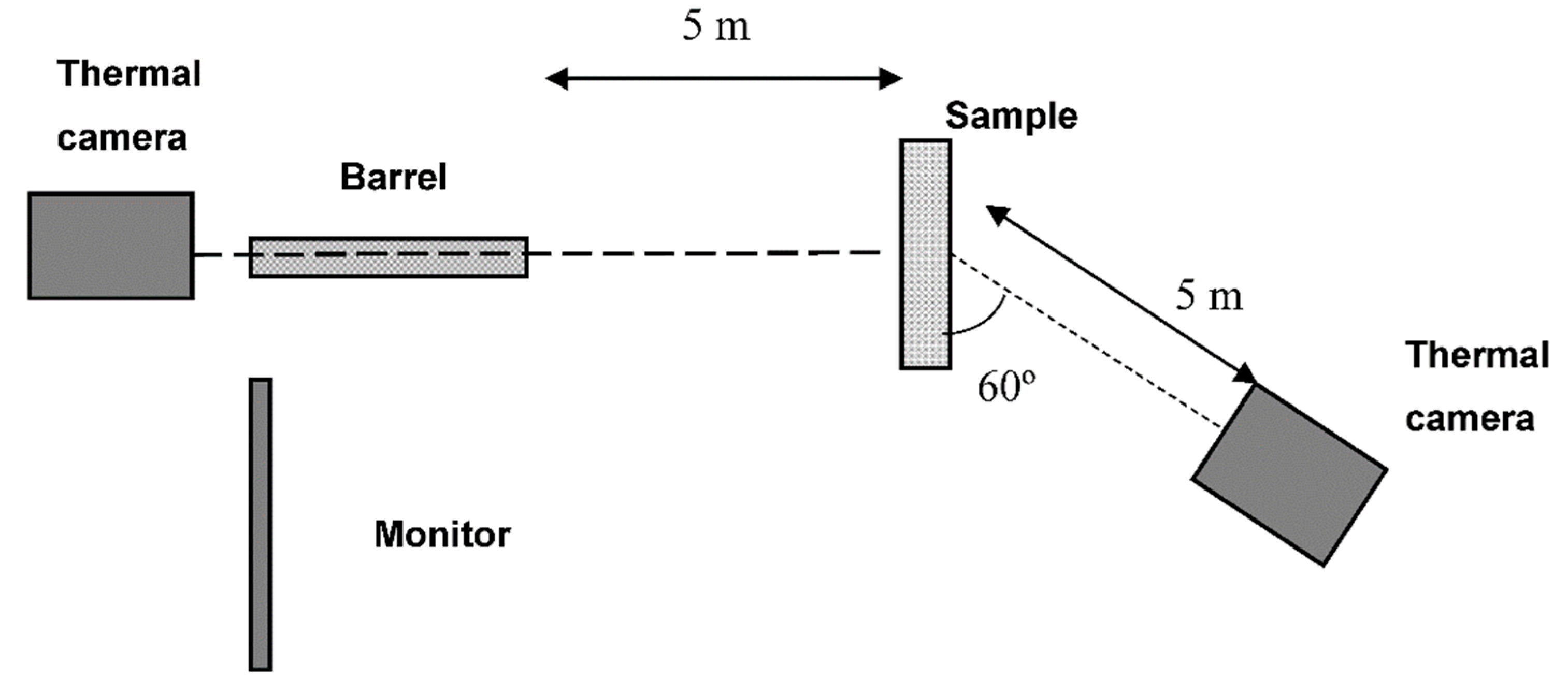

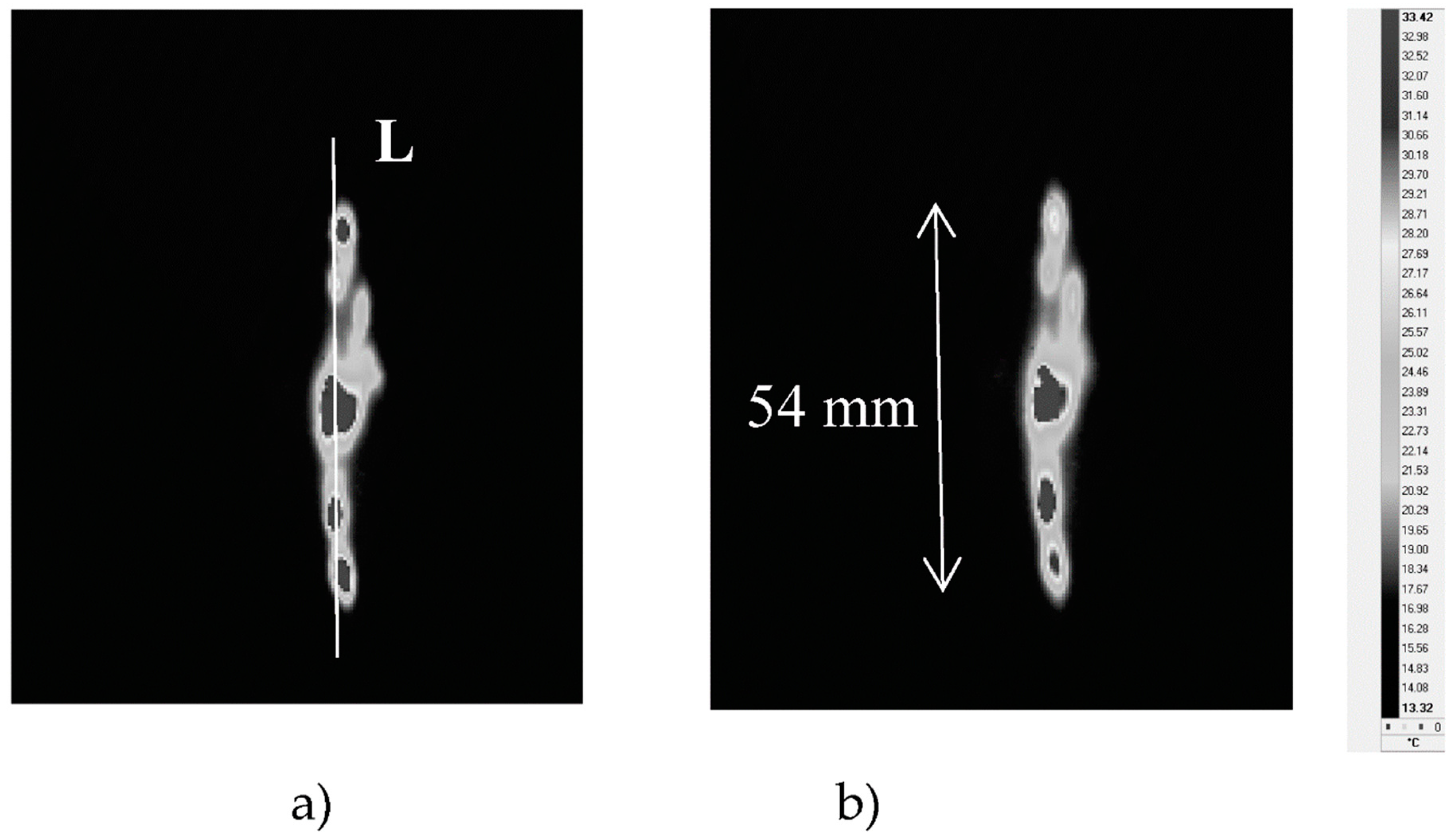

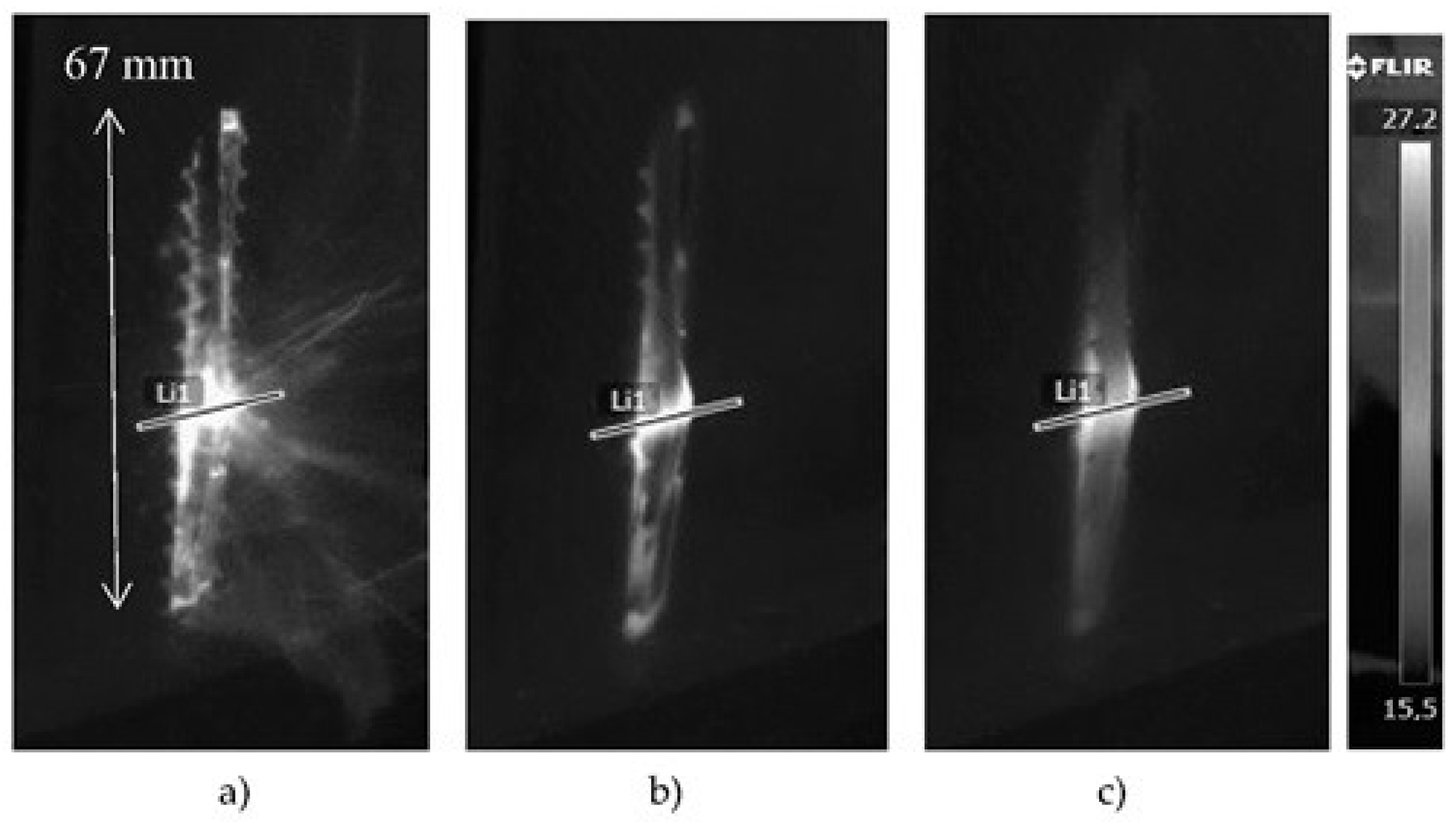

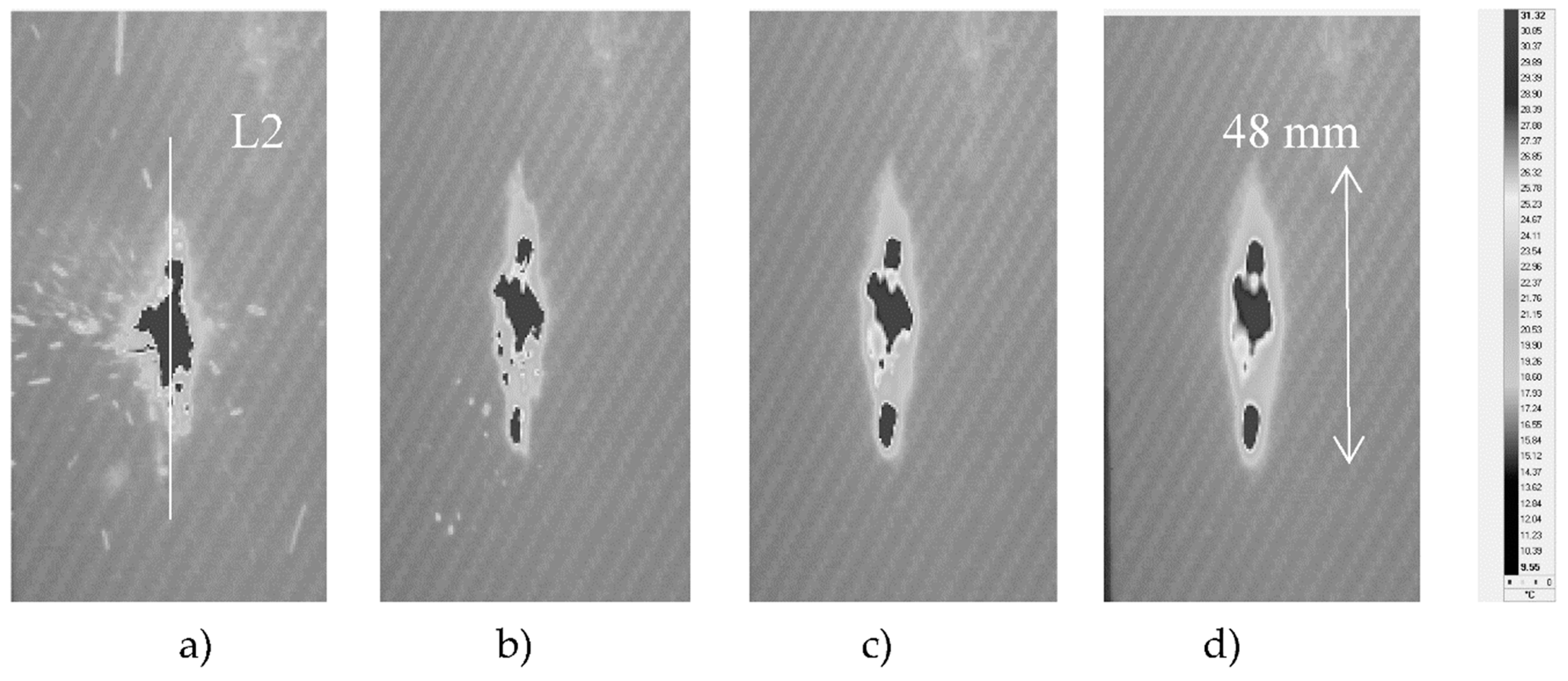

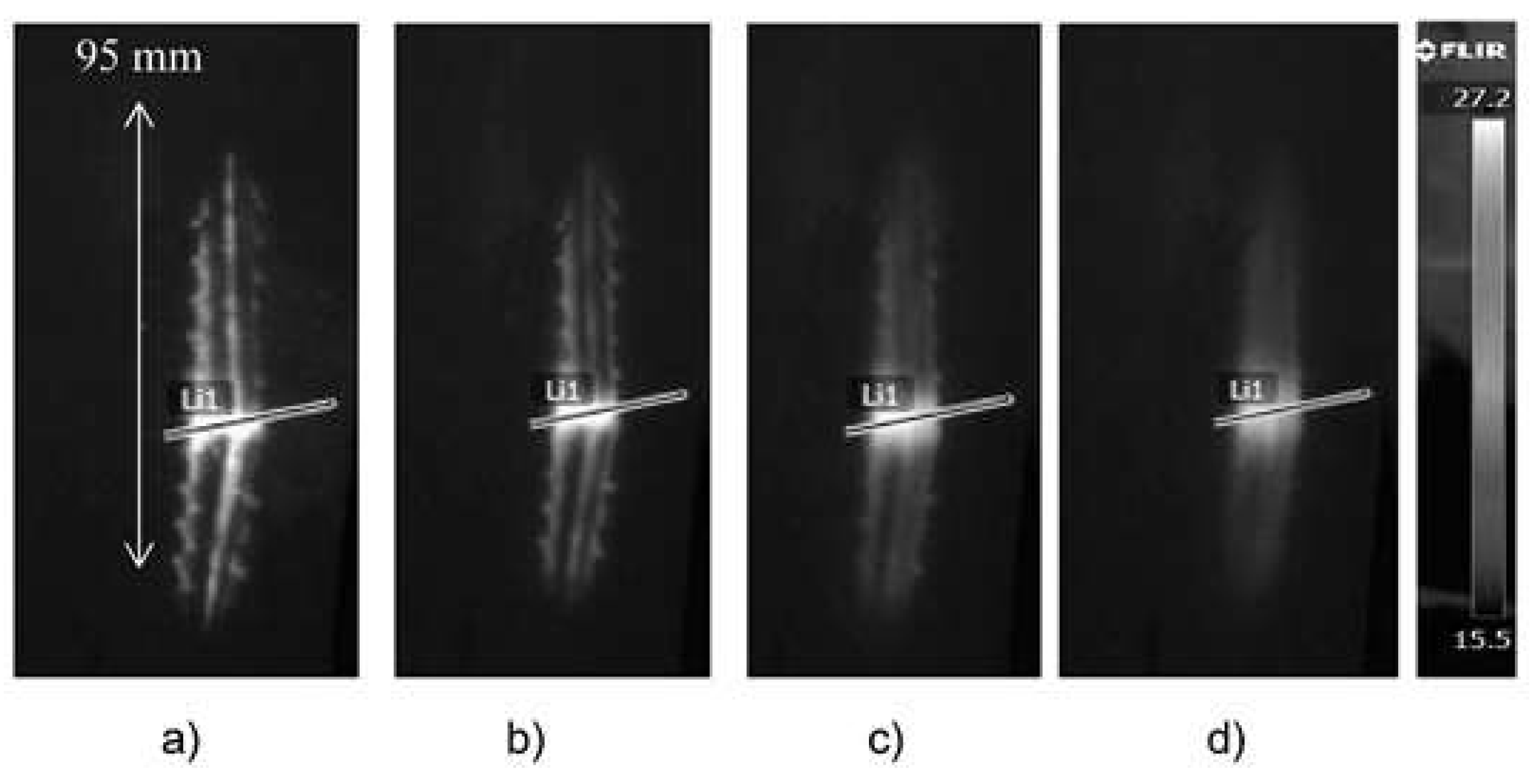

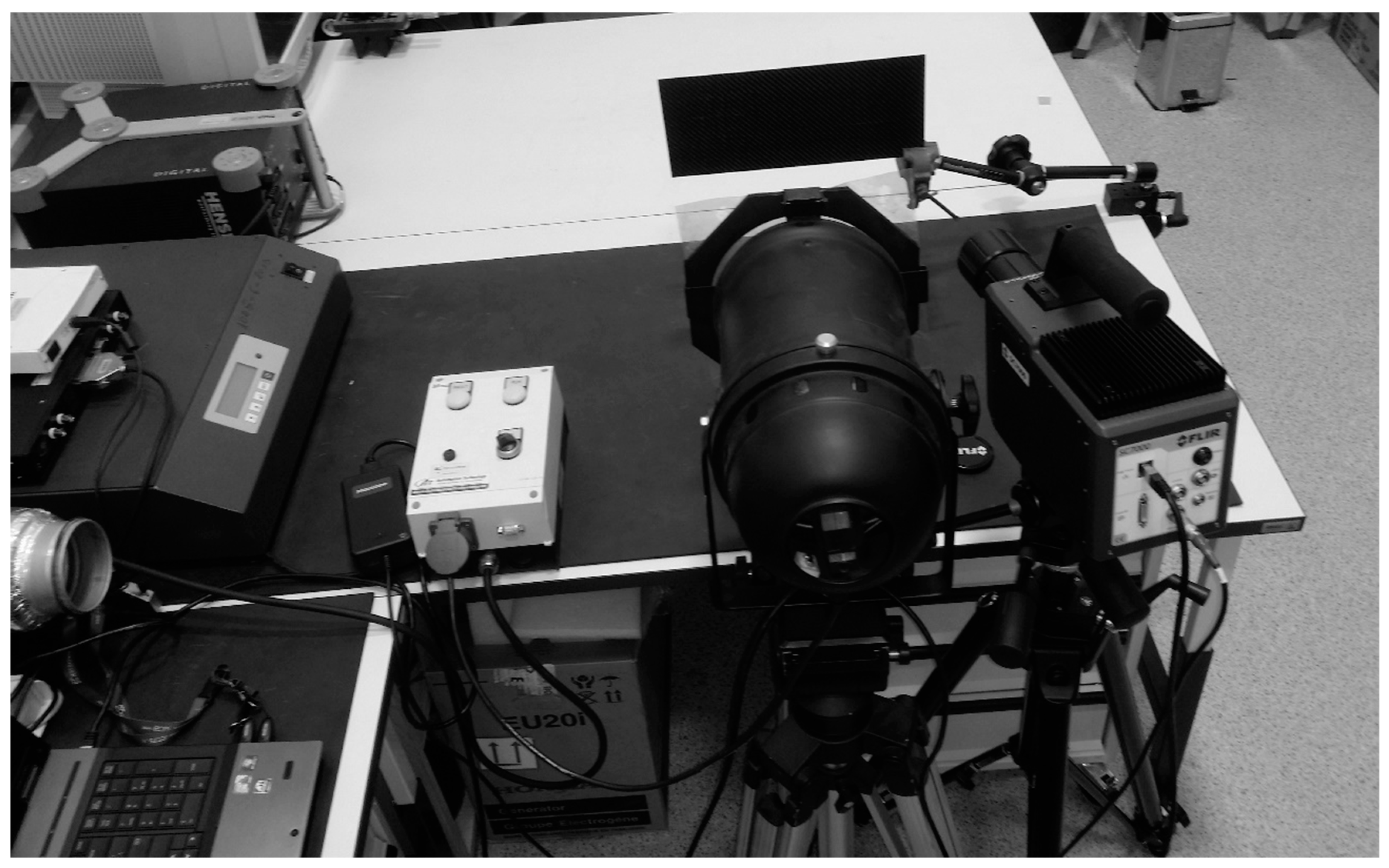
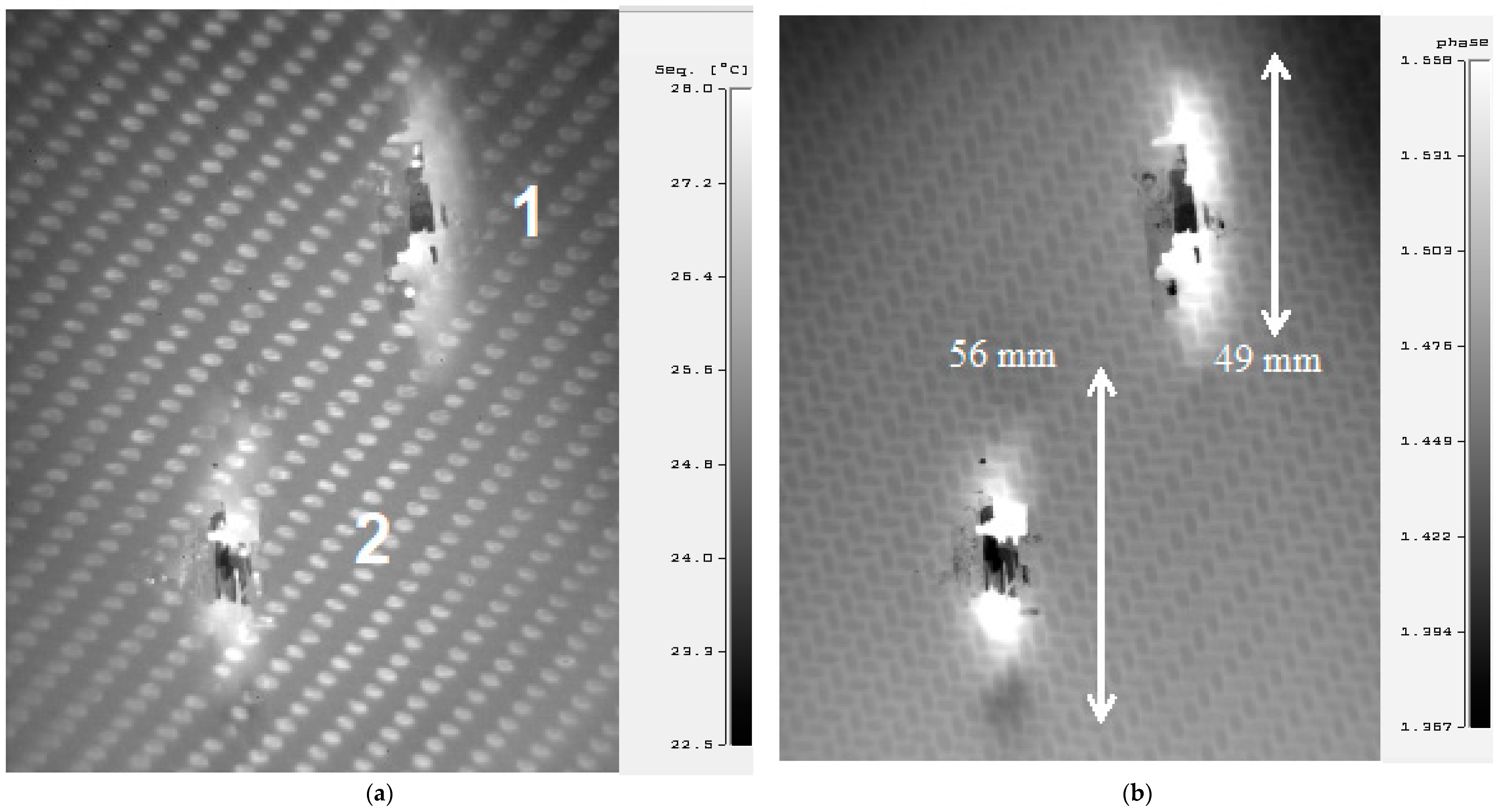
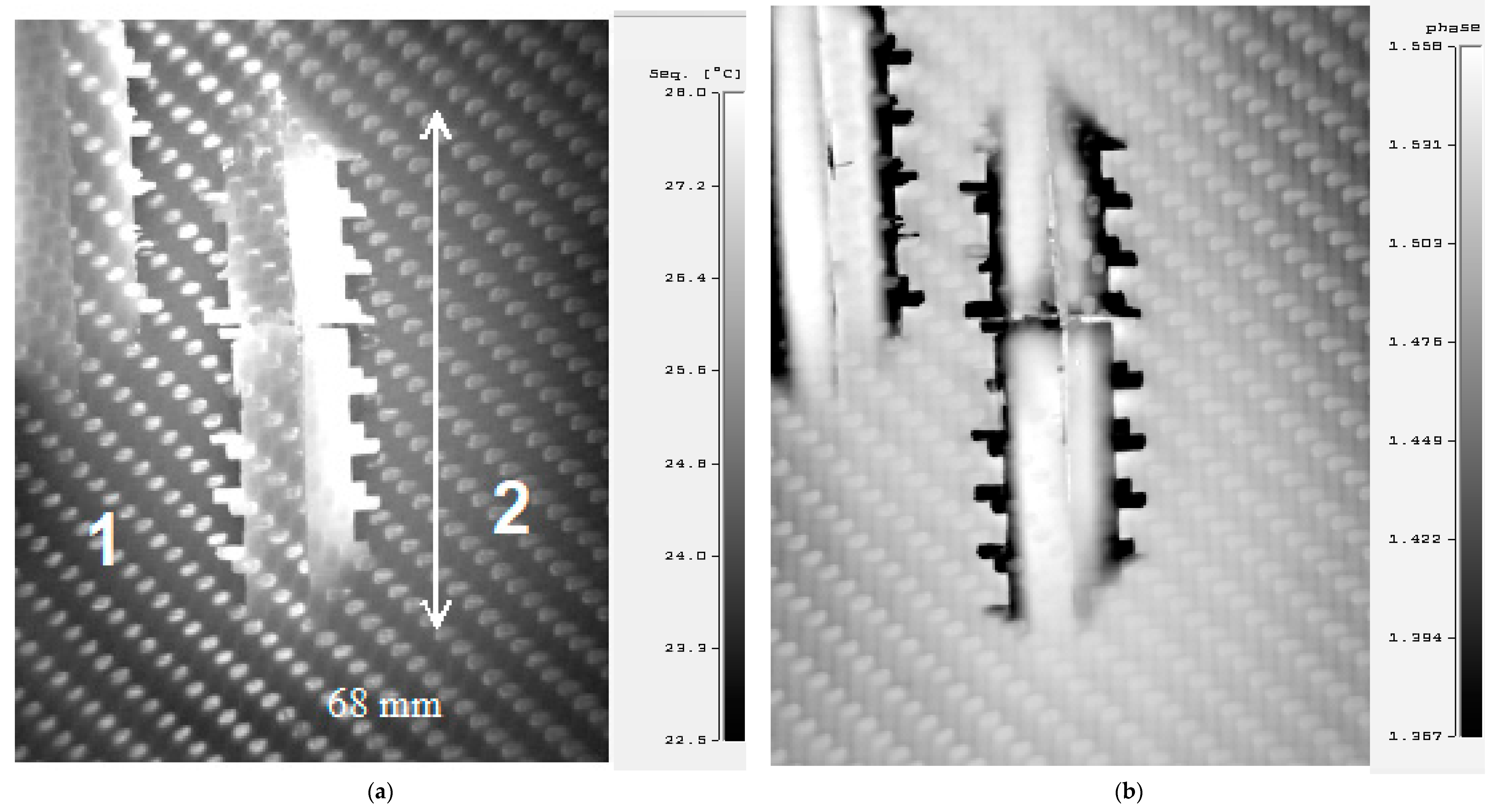
| Parameters | FLIR SC 7600 | FLIR A655 |
|---|---|---|
| Detector type | InSb | Uncooled microbolometer |
| Spectral range | 3–5 µm | 7.5–14.0 µm |
| Resolution | 640 × 512 | 640 × 480 |
| NETD (Noise Equivalent Temperature Difference) | 17 mK | <30 mK |
| Detector pitch | 15 µm | 17 µm |
| Frame rate (full window) | 380 Hz | 50 Hz |
| Max frame rate (at min window) | 30 kHz | 200 Hz |
| Accuracy at reading | ±1% | ±2% |
© 2019 by the authors. Licensee MDPI, Basel, Switzerland. This article is an open access article distributed under the terms and conditions of the Creative Commons Attribution (CC BY) license (http://creativecommons.org/licenses/by/4.0/).
Share and Cite
Swiderski, W.; Hlosta, P. Non-Destructive Evaluation of Impacted CFRP by IR Thermography. Materials 2019, 12, 956. https://doi.org/10.3390/ma12060956
Swiderski W, Hlosta P. Non-Destructive Evaluation of Impacted CFRP by IR Thermography. Materials. 2019; 12(6):956. https://doi.org/10.3390/ma12060956
Chicago/Turabian StyleSwiderski, Waldemar, and Pawel Hlosta. 2019. "Non-Destructive Evaluation of Impacted CFRP by IR Thermography" Materials 12, no. 6: 956. https://doi.org/10.3390/ma12060956
APA StyleSwiderski, W., & Hlosta, P. (2019). Non-Destructive Evaluation of Impacted CFRP by IR Thermography. Materials, 12(6), 956. https://doi.org/10.3390/ma12060956





